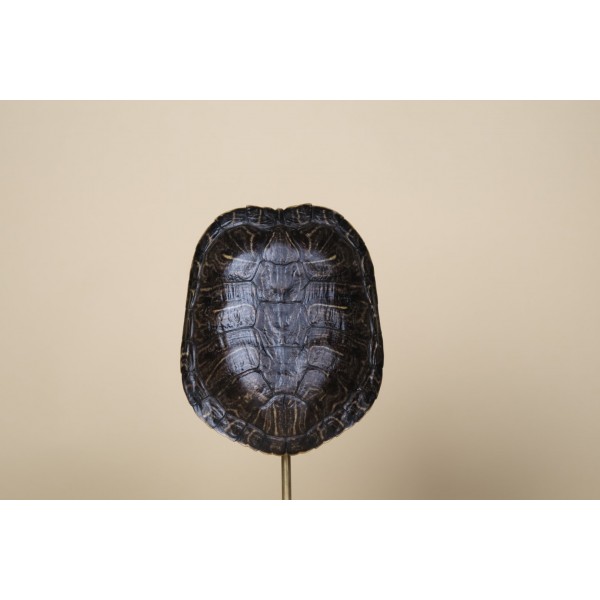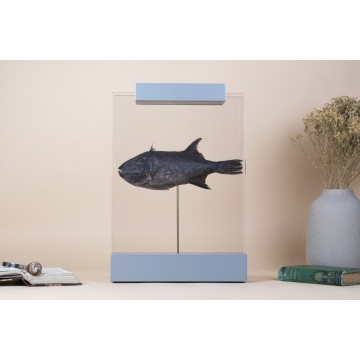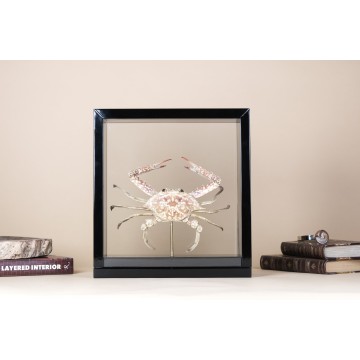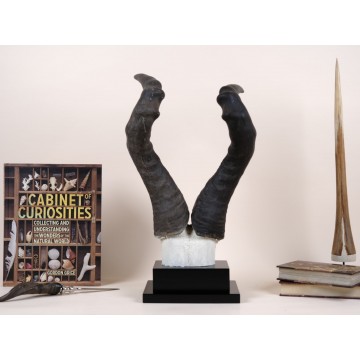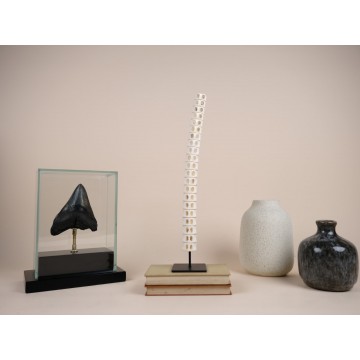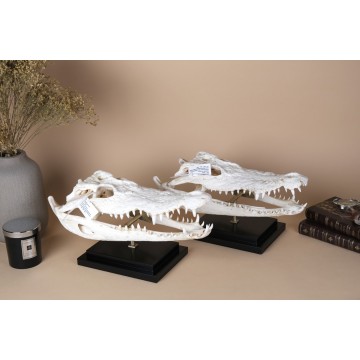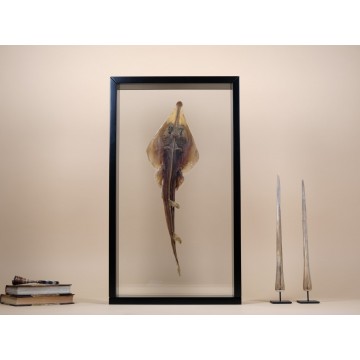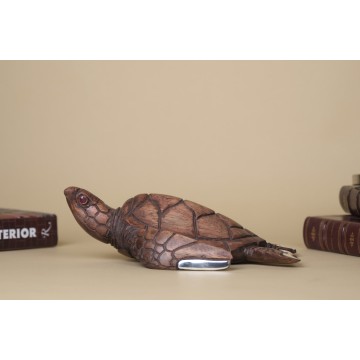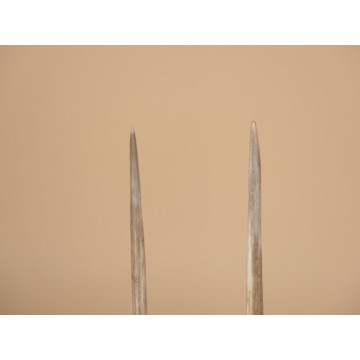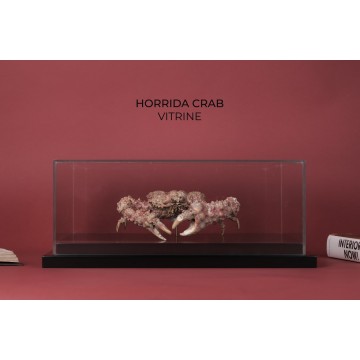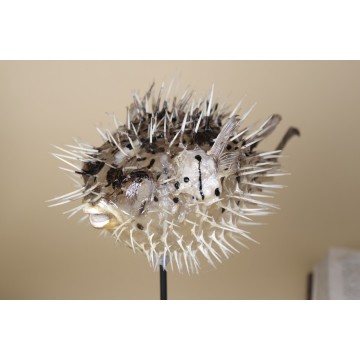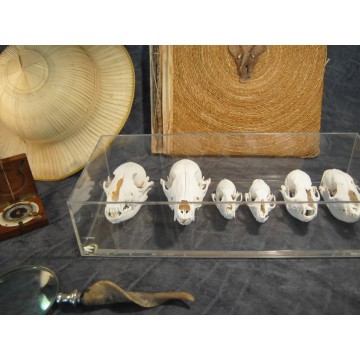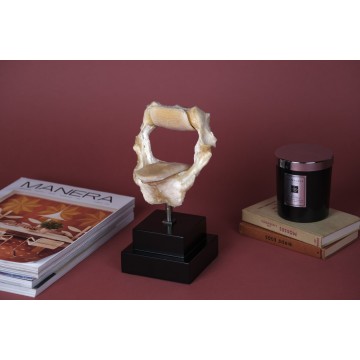Spotted triggerfish
Spotted Triggerfish (Canthidermis maculata) - With distinctive dark and pectoral blotches on its fins, the Spotted Triggerfish exhibits a striking appearance, turning almost black after preparation. Like other fish in the Balistidae family, it features a lyre-shaped tail. Spotted oceanic triggerfish demonstrate dietary versatility, feeding on both carnivorous and planktivorous fare. Upon examination, they have been observed consuming smaller fish, Halobates (sea skaters), members of the order 'Siphonophores,' and smaller cartilaginous fish. This specimen was fished at a depth of 30 meters in Cadiz, Negros Archipelago – Philippines.
This unique specimen is mounted in a matte grey lacquered wood vitrine crafted by One of a Kind.

